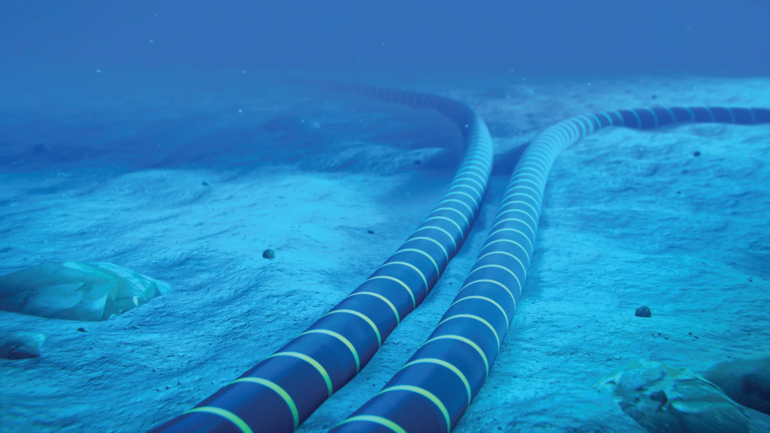Meta, the parent company of Facebook and Instagram, has announced plans to lay a groundbreaking undersea cable that will span five continents, designed to handle vast amounts of data, including that required for developing artificial intelligence (AI).
The new cable, stretching over 50,000 kilometers (31,000 miles), will connect the US, South Africa, India, Brazil, and other regions, according to a blog post from Meta on Friday.
Global digital communication relies heavily on undersea cables, with approximately 1.2 million kilometers of cable already installed, as reported by the US-based Centre for Strategic and International Studies (CSIS) in 2024. These cables range from short regional connections to expansive, continent-spanning systems that link multiple regions.
Each undersea cable consists of several pairs of fiber-optic cables enclosed in an armored sheath, which is often buried several meters beneath the seabed for protection.
In recent years, major digital giants like Meta have entered the subsea cable industry, a sector that was once dominated by telecommunications providers.
“When your growth becomes so large and your data demands exceed those of other players, it makes sense to invest directly and cut out the middleman,” said Alan Mauldin, research director at the data firm Telegeography.
Meta described the project as a “multi-billion-dollar, multi-year investment,” a modest amount compared to the tens of billions being invested annually into AI by major companies.
Building resilient networks
Both Google and Meta have been especially active in the subsea cable market, whether by joining consortiums to co-own new cables or by building them independently. This drive is largely driven by the immense data demands of platforms like YouTube, Facebook, and Instagram.
Meta’s “Project Waterworth” cable will be its third sole-owned undersea cable, far behind Google, which has 16. Meta’s first cable, “Anjana,” linking the US and Spain, is expected to be operational later this year.
The “Waterworth” cable is named in honor of Gary Waterworth, a former Meta employee who had a distinguished career at Alcatel Submarine Networks (ASN), the French cable-laying company responsible for the installation. ASN, along with other companies like SubCom, NEC, and China’s HMN, is one of the few firms globally capable of installing undersea cable hardware.
Platforms like Meta are not just focused on expanding their global infrastructure but also enhancing the resilience of their networks, Mauldin explained. “A single high-capacity cable isn’t enough; you need several because if one goes down, you can reroute traffic through others.”
Every year, around 200 incidents cause damage to subsea cables, which can disrupt significant portions of global economic activity. These incidents can occur due to natural events like underwater landslides and tsunamis, or human factors such as ship anchors or fishing equipment.
AI and the growing demand for data
Subsea cables are also at risk of targeted sabotage or espionage. In January, NATO launched patrols in the Baltic Sea after suspected attacks on telecom and power cables, which experts have linked to potential Russian involvement.
Meta’s “Waterworth” cable route strategically avoids politically sensitive regions like the South China Sea and the Red Sea, known for geopolitical tensions. The company emphasized that this new cable would provide the high-speed, abundant connectivity required to fuel AI innovation.
“AI is the hottest topic in the industry right now,” said Mauldin from Telegeography. While the exact impact on subsea cables and bandwidth demand remains uncertain, he noted that training AI models requires enormous data transmission to computing clusters around the world, and AI inference—real-time responses to user queries—also requires significant bandwidth.
Mauldin highlighted the advantage that large companies, or “hyperscalers,” like OpenAI (backed by Microsoft) and Anthropic (supported by Google and Amazon), have in this rapidly growing space, especially with their extensive data centers and networks.


